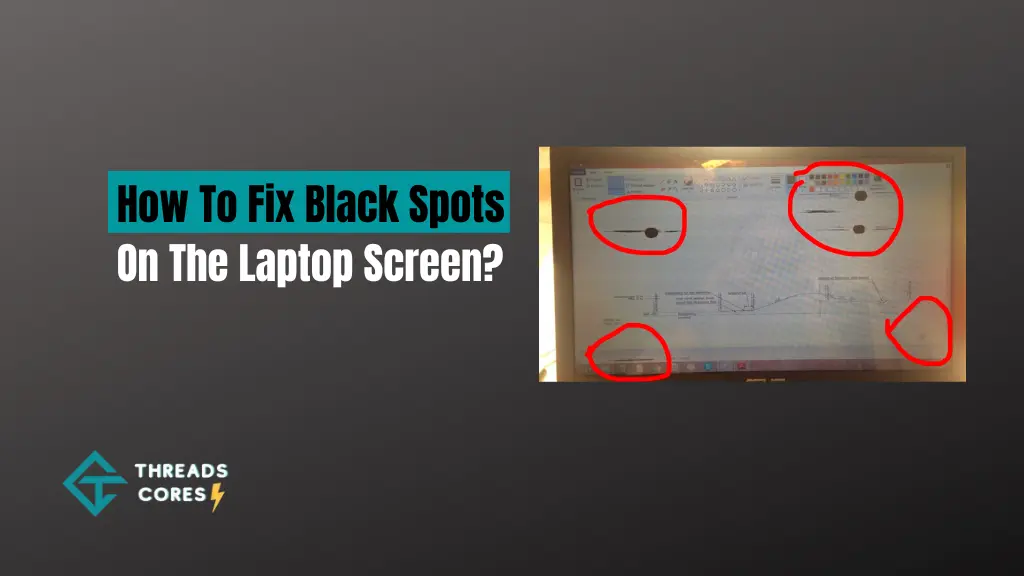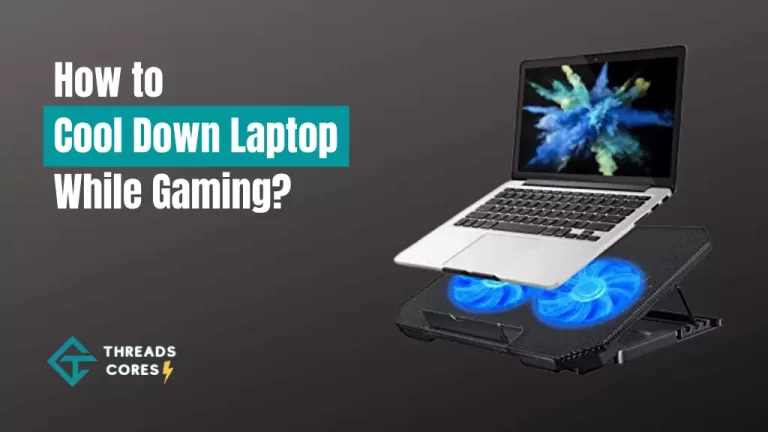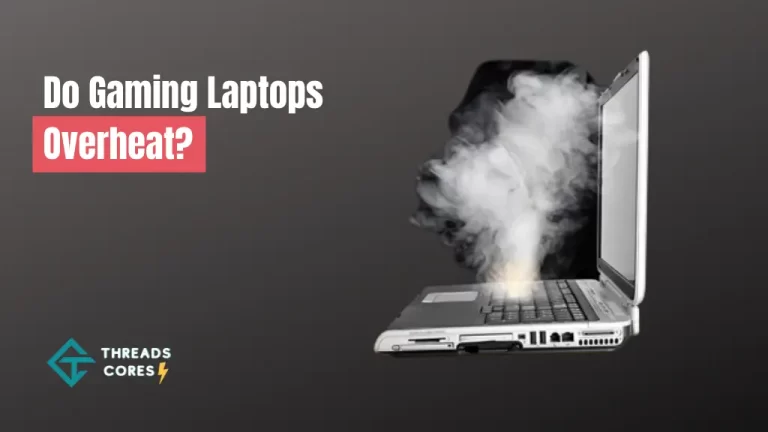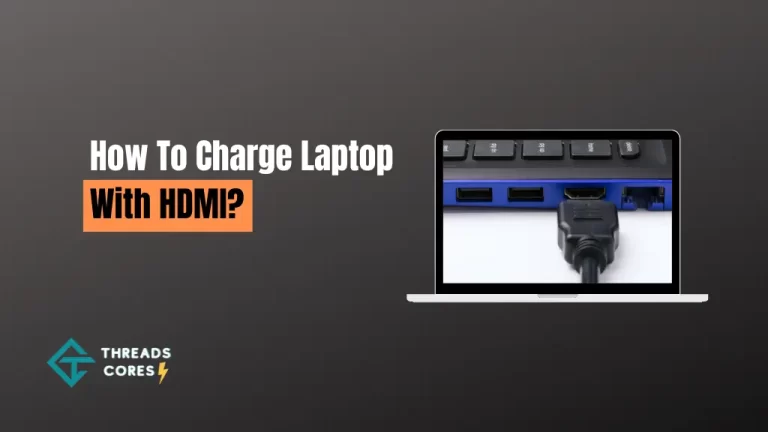
Are you seeing black spots on your laptop screen? They can be frustrating and make it difficult to see what’s on your screen. Don’t worry; you’re not alone. In fact, this is a common problem for laptop users. Luckily, it’s also a problem that can be fixed relatively easily.
In this post, we’ll tell you what causes black spots on screens and how to fix black spots on laptop screen. We’ll also provide some tips to help prevent the issue from happening in the first place. Keep reading to learn more!
How To Fix Black Spots On The Laptop Screen
What is a black spot on your computer screen? A black spot, also called a stuck pixel or dead pixel refers to a tiny screen area that will not display colors.
In other words, it has been permanently turned off for some reason. If you have several black spots on laptop screen, several pixels have been turned off. There are many reasons why this might happen.
For example, the pixel may have lost power due to a faulty electronic connection, or it could be because of age-related wear and tear.
Stuck or Dead Pixels: What They Are and How To Fix Them
If you’ve ever had a problem with a stuck pixel, then you probably already know that it’s not easy to fix. In fact, there is no guaranteed method of fixing stuck pixels.
However, there are some things you can try before trying more costly methods. The first thing to do when you notice a black spot on your screen is to restart the computer; this will often fix the problem.
If that doesn’t work, try changing the color mode of your laptop (such as switching from full-screen to windowed mode). If that doesn’t work, you can try using software designed to test and fix pixels.
One such program is JScreenFix, (see #4 below) which will run continuously in the background while watching for dead pixels; it will automatically trigger a system reboot when one is found. If all else fails, some companies will be willing to repair your laptop screen for you.
How To Check Black Spots On Your Laptop Screen?
If you want to check for stuck pixels yourself, here’s what you need to do:
- Turn off your monitor or laptop.
- Look closely at the screen and notice where there are small areas that are colored differently than what you would expect. If there are several areas, then it’s best to look for them in the corners of the screen, where they may be more noticeable.
- Turn on your monitor or laptop and see if these areas still appear(don’t worry if they only appear when the screen is dark)
Preventing Stuck Pixels On Your Laptop Screen
Many people will go their lives without ever having a single pixel become stuck. Having a stuck pixel shouldn’t be something to worry about too much. If you want to avoid having a black spot on monitor screen, there are some things you can do to prevent it.
1. Get rid of the dust
When not in use, use compressed air to clean your screen (nearly everyone should be doing this anyway). If you don’t have access to compressed air, rub your fingers in a circular motion on the screen; however, this might cause more harm than good.
Dust and other debris could get stuck to the surface of your screen and cause pixels not to be able to communicate properly with the motherboard.
2. Keep away from the edges of your laptop
Yes, dust is terrible, but it’s also bad to put your laptop in a position where air can’t get to the screen. For example, anything on the keyboard should never block the vents (see #7 below).
3. Don’t press hard
While you’re using your computer, don’t use excessive pressure on the mouse or press down too hard on the keyboard. This won’t prevent black spots forever, but it can help lengthen the amount of time between screen repairs.
4. Use a laptop stand
Laptop stands make it easier for air to circulate the screen; they also keep your laptop at an angle that reduces pressure on the keyboard and mouse (see #7 below)
5. Turn down the brightness
Another cause of pixel problems is having your backlight turned up too high. Most laptops let you control the brightness of the LCD. It’s best to keep it at a lower level (this will also save on battery life)
6. Use Free Fix Stuck Pixel Software
You can try fixing the problem yourself with software that helps detect and fix stuck pixels; this is available for free online, such as JScreenFix.
7. Give your laptop screen space
Even if you’re careful about avoiding debris, it’s still possible that dust could get stuck over time. If there isn’t enough room for air to circulate the screen, the pressure will build up and cause pixel problems. A sturdy table is best, but even a clean carpet can work.
8. Take care of your laptop
If you’re the type who throws your laptop into your backpack or throws it on the floor when you’re done with it, then this advice probably isn’t for you! However, if you treat your laptop right and don’t do anything to physically harm it, then you can expect a more extended period of time before a black marks on laptop screen appears.
What Causes Black Lines On Laptop Screen?
There are several different reasons why you might notice black lines on your laptop screen.
For example, if your laptop is in “sleep mode” or is currently powered off, then you may see these black lines when you turn it back on (when the screen lights up). Assuming that the sleep mode works properly and isn’t broken, this problem is relatively minor.
Another cause for black lines on your laptop screen is a loose connection between the laptop’s motherboard and LCD. This might be caused by an active/moving fan or by transporting the laptop when it wasn’t properly closed.
If this is not something you did yourself, then you’ll need to contact the manufacturer of your laptop to fix the problem.
It’s also possible that a faulty or loose cable causes your laptop’s black lines. If you’re familiar with how to take apart your laptop, then this may be an easy thing for you to do. If not, it would be best to leave this issue up to professional repair services.
Can You Fix The Pressure Marks On The Laptop Screen?
Pressure marks on laptop screens can be tricky to fix. That’s because they’re often not associated with a single cause, and the black lines/pressure marks may not go away by themselves. For example, pressure marks might appear due to:
- Overheating (caused by dust build-up inside the unit)
- Overuse(just like with any other electronic device, there are limits to how long you can use it before shutting it down).
- The user pressed on the keyboard/trackpad too hard.
While some pressure marks may go away on their own, others will not. Professional repair services are recommended to fix stuck pixels or black lines on your laptop screen.
How To Fix a Stuck Pixel On a Laptop Screen?
Stuck pixels are often difficult to fix. The pressure from your fingers is likely to make the problem worse rather than better. This means that trying to tap it may only cause the black mark to spread across more pixels, making it take up an even bigger space on your screen.
If you’ve tried the above suggestions (such as cleaning your keyboard, removing debris between keys/buttons, and making sure there’s plenty of room for air to circulate your laptop) and you’re still having problems with black pixel spots on your laptop screen, then it may be time to take the unit in for repair. The manufacturers of your laptop may be able to replace the LCD screen for you (at a cost).
What Does a Dead Pixel Look Like?
A pixel is “dead” when it does not turn on at all. When a single pixel is missing, you will see a dark spot where the screen should be lit up. The size of this spot depends on how many other surrounding pixels are working properly.
If there are surrounding pixels lighting up, then the dead pixel should be one solid color (usually red, blue, green, or white).
If there are no surrounding pixels lighting up, then the dead pixel will be genuinely black. If you turn on your laptop and notice just a single black spot that never turns into any other color, then it’s probably time to take the unit to a professional.
Frequently Asked Questions
1. What causes dead pixels on a laptop screen?
Dead pixels on a laptop screen are caused by a defect in the display panel. This can happen during the manufacturing process or due to physical damage or wear and tear. Dead pixels can appear as a small, non-responsive spot on the screen, or as a line of pixels that don’t display properly. While not necessarily a serious issue, dead pixels can be annoying and distracting.
2. How to fix black spots on an LCD screen?
The best way to fix black spots on an LCD screen is to replace the display panel. Unfortunately, this can be an expensive and time-consuming process, so it’s not always the best solution. In some cases, the black spots may be caused by dirt or smudges on the screen, which can be cleaned with a soft cloth and mild cleaning solution. However, if the black spots are due to a defect in the display panel, it may be best to simply replace the laptop or monitor.
3. Why does my laptop screen have black spots?
Black spots on a laptop screen can be caused by a number of factors. It could be due to physical damage or wear and tear, such as a crack or scratch on the display panel. It could also be due to a defect in the panel, such as dead pixels or a malfunctioning backlight. In some cases, black spots can be caused by dirt or smudges on the screen, which can be cleaned with a soft cloth and mild cleaning solution. If the issue persists, it’s best to seek professional help or replace the laptop or monitor.
Conclusion
So, there you have it. A step-by-step guide to fixing black spots on your laptop screen. We hope this was helpful and that you are now able to resolve the issue yourself without having to take your computer into a store or hire someone to do it for you.
We love getting feedback from our readers and helping out where we can! If you found this post helpful, please let us know in the comments below or by emailing us directly.

I believe good gaming is not only about how it is played but how smooth it is.







